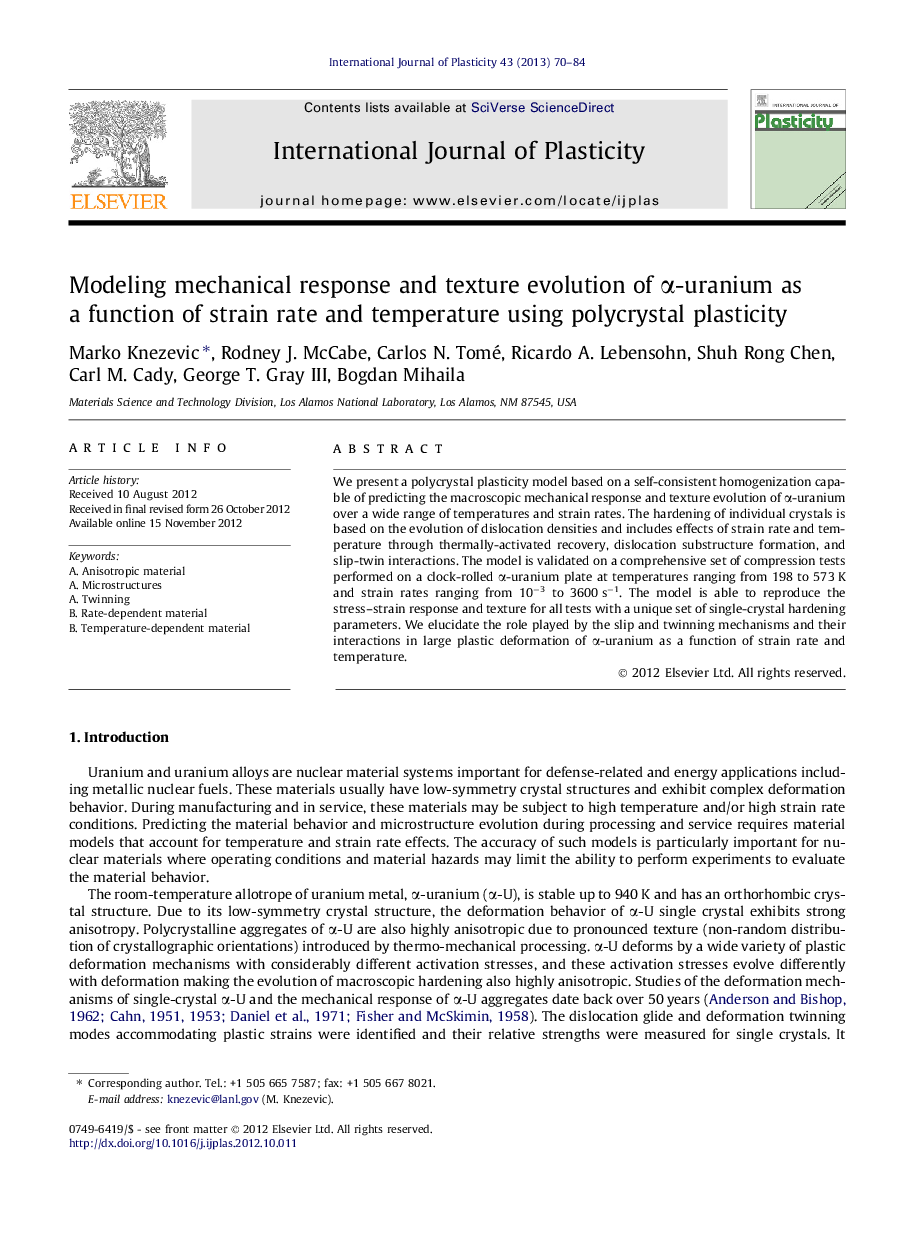| Article ID | Journal | Published Year | Pages | File Type |
|---|---|---|---|---|
| 786923 | International Journal of Plasticity | 2013 | 15 Pages |
We present a polycrystal plasticity model based on a self-consistent homogenization capable of predicting the macroscopic mechanical response and texture evolution of α-uranium over a wide range of temperatures and strain rates. The hardening of individual crystals is based on the evolution of dislocation densities and includes effects of strain rate and temperature through thermally-activated recovery, dislocation substructure formation, and slip-twin interactions. The model is validated on a comprehensive set of compression tests performed on a clock-rolled α-uranium plate at temperatures ranging from 198 to 573 K and strain rates ranging from 10−3 to 3600 s−1. The model is able to reproduce the stress–strain response and texture for all tests with a unique set of single-crystal hardening parameters. We elucidate the role played by the slip and twinning mechanisms and their interactions in large plastic deformation of α-uranium as a function of strain rate and temperature.
► We present a model for predicting mechanical response and texture of α-uranium. ► α-uranium model accounts for strain rate and temperature effects. ► Hardening of individual crystals is based on the evolution of dislocation densities. ► Law includes effects of recovery, dislocation substructure and slip-twin interactions. ► We discuss role of deformation modes on mechanical behavior and texture evolution.
